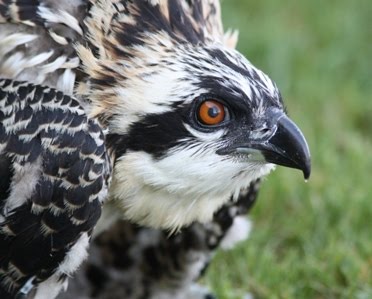Another interesting day in the field. This is the time of year that we start to discover nests that have failed for one reason or another, and that is what happened today. For several weeks I have been visiting a nest and finding an extra male harassing the incubating pair. The unbanded male interloper was there most of the time, trying to land on the nest, perching nearby, doing a sky dance, and both the male and female would leave the nest to chase him away. I was there a week ago and this scenario was playing out again. Today the residential banded male was nowhere to be found and the female was no longer incubating. She just perched nearby, preening. Then she was joined by the unbanded male. He behaved defensively, turning his back to her and shaking his wings occasionally. Other times they just preened near each other. No vocalizations, no chasing. I was there for nearly three hours and did not see any incubation or the banded male. Wish I knew what actually happened. Perhaps a new frustration nest will pop up in the area, or I will find the banded male elsewhere. Hmmmmmm.
Sometimes I can figure out why a nest failed. If they incubate too long we know the eggs were infertile. Sometimes the behaviors of the adults give us clues. A sudden abandonment can be due to predation. Storms and hail can damage eggs. I am not sure what happened in this case. I do not believe a new male would easily run off the territorial male mid season. Did something happen to the banded male and the new male is just taking advantage of the opportunity to take over this territory? Hopefully further visits may offer some insights.



